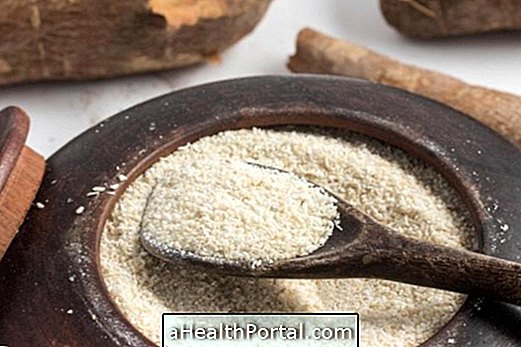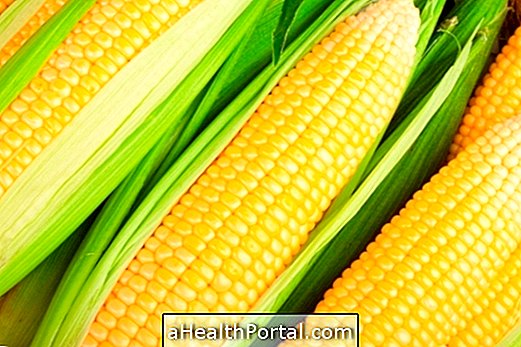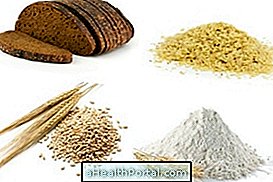Cassava flour is known to favor weight gain by being rich in carbohydrates, and since no fiber does not generate satiety during the meal, making it easier to increase the amount of calories consumed without realizing it. On the other hand, it is a low-processed food that has minerals like iron, calcium, magnesium and potassium that helps balance the meal.
However, this flour has an average glycemic index of 61, does not contain gluten and is made from cassava, also known as cassava or cassava. This flour is commonly sprinkled on top of any meal, but with it can also be made farofa, a typical Brazilian preparation, which also includes onions, oil and sausage.
When consumed daily and in great quantity, cassava flour becomes fattening, especially when eating the farofa of the barbecue or opts for the farofa industrialized.

How to Eat Manioc Flour Without Getting Fat
To enjoy the taste of cassava flour while avoiding weight gain, you should eat only 1 tablespoon of cassava flour a day, avoiding consuming farofa, which is a preparation that has more calories and fat.
In addition, it should accompany the meal with meats and salads, which are foods that are satiety more and help to decrease the glycemic load of the meal, helping to avoid weight gain. Understand what is glycemic index and glycemic load.
Another caution is to avoid consumption along with high-fat foods such as sausage and bacon, and other simple carbohydrate types such as white rice, non-whole noodles, potatoes, sugar or canned juices, and sauces that carry wheat flour or maize in its preparation.
Benefits of Cassava Flour
Because it is a poorly processed food, simple cassava flour is a good option to reduce the consumption of processed foods and brings benefits such as:
- Give energy, because it is rich in carbohydrates;
- Prevent cramps and promote muscle contraction by being rich in potassium;
- Help prevent anemia by containing iron;
- Help relax and control blood pressure due to its magnesium content.
However, it is important to remember that these benefits are obtained by consuming simple manioc flour or in the form of low-fat homemade farofa. Industrialized farofa is not recommended as these contain a lot of salt and bad fats added.
Nutritional information
The following table shows the nutritional information for 100 g of raw and toasted manioc flour.
| Raw cassava flour | Cooked cassava flour | |
| Energy | 361 kcal | 365 kcal |
| Carbohydrate | 87.9 g | 89.2 g |
| Protein | 1.6 g | 1.2 g |
| Fat | 0.3 g | 0.3 g |
| Fibers | 6.4 g | 6.5 g |
| Iron | 1.1 g | 1.2 g |
| Magnesium | 37 mg | 40 mg |
| Calcium | 65 mg | 76 mg |
| Potassium | 340 mg | 328 mg |
Cassava flour can be consumed in the form of farofa, cakes and biscuits.
Cassava Flour Cake Recipe
The cassava flour cake is a great option to be used in snacks, and may be accompanied by coffee, milk or yogurt, for example. However, because it contains sugar, it should not be consumed by diabetics.

Ingredients:
- 2 cups of sugar
- 100 g unsalted butter
- 4 gems
- 1 cup coconut milk
- 2 1/2 cups of sifted raw manioc flour
- 1 pinch of salt
- 4 egg whites
- 1 tablespoon baking powder
Method of preparation:
Beat the sugar, butter and egg yolks in the mixer until it forms a cream. Add coconut milk, salt and flour gradually. Finally, add the yeast and egg whites to the snow, and gently stir with a spoon until the dough is homogenized. Pour the dough into greased form and bring to the preheated oven at 180ºC for about 40 minutes.
To improve diet and diet, see How to Make Tapioca to Substitute Bread.























